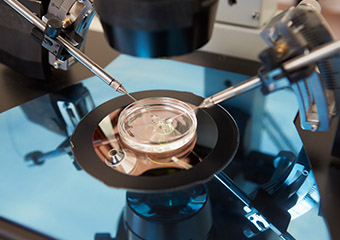Blastocyst Transfer
Blastocyst Culture & Transfer technique was developed to aid In-Vitro Fertilization. Traditionally embryos were transferred to the uterus on the third day after fertilization. A healthy embryo called “Blastocyst” is grown in the laboratory for 5 to 6 days after egg collection and insemination.
In blastocyst culture, over the period of 5 to 6 days embryo gets divided into multiple cells. Usually, the strongest embryos make it to blastocyst stage as they have survived key growth and division processes and have a better chance of implanting once transferred.
Central cells, also known as inner cell mass gives rise to foetus after implantation, whereas the single layer cells outside blastocyst form trophectoderm that gives rise to placenta.
The real advantage of blastocyst transfer is the high birth rates. This technique is also intended towards minimizing the chance of multiple pregnancies.
Who Can Benefit from Blastocyst Culture?
For patients with multiple failed IVF: Performing a blastocyst culture on a patient with a history of failed IVF with day2/3 embryo transfer, can yield more information related to the growth of the embryos and aid in improving pregnancy rate
To eliminate multiple pregnancies: Blastocyst culture allows the possibility of transferring the single best embryo and thereby reducing the chance of multiple pregnancy.

